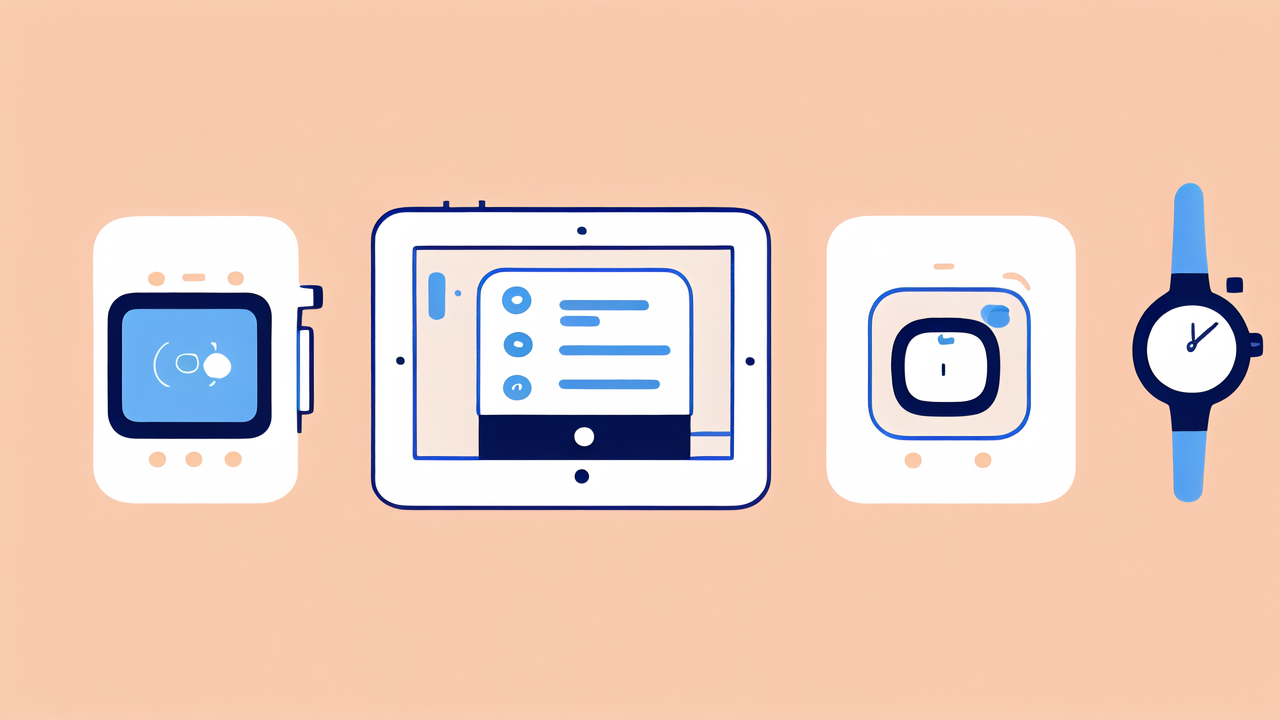Understanding the Evolution of Smartwatches
The Advent of Smartwatches in the United States Market
Smartwatch technology in the US has come a long way since its early days. The first devices were basic, with limited features. They mainly told time and showed notifications. As tech improved, so did smartwatches. Companies like Apple, Samsung, and Fitbit led the charge. They brought new ideas to the market. These watches became more than just timepieces. They turned into mini-computers for our wrists. The US market embraced this trend quickly. Consumers loved the idea of having info at their fingertips. This paved the way for more advanced features in future models.

Key Innovations in Smartwatch Technology Over the Years
Over time, smartwatches have seen major upgrades. One big change was adding health tracking features. Heart rate monitors and step counters became standard. GPS was another game-changer. It allowed for accurate fitness tracking outdoors. Water resistance improved, making watches more durable. Touch screens got better, with clearer displays. Battery life increased, letting users wear watches longer. Wireless charging made powering up easier. Voice assistants like Siri and Google Assistant were added. This made hands-free control possible. Each year brought new features, making smartwatches more useful.
The Role of AI and Machine Learning in Smartwatch Development
AI and machine learning have revolutionized smartwatches. These technologies make watches smarter and more helpful. They can learn user habits and preferences over time. This allows for personalized notifications and suggestions. AI helps in health monitoring too. It can detect irregular heart rhythms or predict potential health issues. Machine learning improves fitness tracking accuracy. It can recognize different types of exercises automatically. AI-powered voice assistants understand natural language better. This makes interaction with the watch more intuitive. As AI advances, smartwatches will become even more intelligent and responsive.
Analyzing Cutting-Edge Smartwatch Features
Advanced Health Metrics and Monitoring Capabilities
Modern smartwatches are becoming powerful health tools. They now offer advanced metrics beyond basic step counting. Many can measure blood oxygen levels and detect atrial fibrillation. Some even track stress levels through heart rate variability. Sleep tracking has become more sophisticated. Watches can now analyze sleep stages and quality. Menstrual cycle tracking is another valuable addition for many users. Some watches can measure skin temperature, offering more health insights. These features turn smartwatches into personal health assistants. They can alert users to potential issues before they become serious. This proactive approach to health monitoring is changing how we manage our wellbeing.

Integration of Augmented Reality and Virtual Assistants
Augmented Reality (AR) is finding its way into smartwatches. Some models now project information onto the real world. This could include navigation directions or workout data. Virtual assistants are becoming more advanced too. They can now handle complex tasks and queries. Voice commands can control smart home devices through the watch. AR and virtual assistants work together to create immersive experiences. For example, a virtual assistant might use AR to show you how to fix something. These features make smartwatches more interactive and useful in daily life.
Enhancements in Battery Life and Performance
Battery life has been a key focus for smartwatch makers. New models can last days or even weeks on a single charge. This is thanks to more efficient processors and better power management. Some watches use solar charging to extend battery life even further. Performance has also improved significantly. Faster processors mean smoother operation and quicker app loading. More storage allows users to keep more apps and data on their watch. Improved Bluetooth connectivity ensures better connection with phones. Some watches now have cellular capabilities, working independently from phones. These enhancements make smartwatches more reliable and convenient for everyday use.
Implications and Applications of Smartwatch Innovations
The Impact of Smartwatches on Consumer Lifestyle and Productivity
Smartwatches have changed how we manage our daily lives. They keep us connected without needing to check our phones constantly. This can reduce distractions and improve focus. Health tracking features encourage more active lifestyles. Users become more aware of their activity levels and health stats. Smartwatches help with time management through reminders and schedules. They can even track habits and help users build better routines. Mobile payments through smartwatches make transactions quick and easy. For many, smartwatches have become essential tools for managing both work and personal life. They offer convenience and efficiency in a compact, wearable form.

The Future of Smartwatches in the Workplace
Smartwatches are finding new roles in professional settings. They can streamline communication in fast-paced work environments. Quick replies to messages can be sent right from the wrist. Some companies use smartwatches for employee health programs. They can track stress levels and encourage regular breaks. In certain industries, smartwatches aid in hands-free operations. For example, they can provide step-by-step instructions for complex tasks. Time tracking and project management become easier with smartwatch apps. As technology advances, we may see more specialized workplace functions. Smartwatches could become essential tools in fields like healthcare and logistics.
Ethical Considerations and Privacy Concerns in Wearable Technology
As smartwatches collect more data, privacy concerns grow. Users worry about how their personal information is used and stored. There are questions about data security and potential breaches. Some fear that employers might use smartwatch data to monitor workers unfairly. Health insurers might want access to fitness data, raising ethical issues. There's also the concern of becoming too dependent on technology. Constant health monitoring might cause anxiety for some users. Balancing the benefits of smartwatches with privacy rights is crucial. As these devices evolve, so must the laws and ethics surrounding their use. Open discussions about these issues will shape the future of wearable tech.




Leave a comment
This site is protected by hCaptcha and the hCaptcha Privacy Policy and Terms of Service apply.